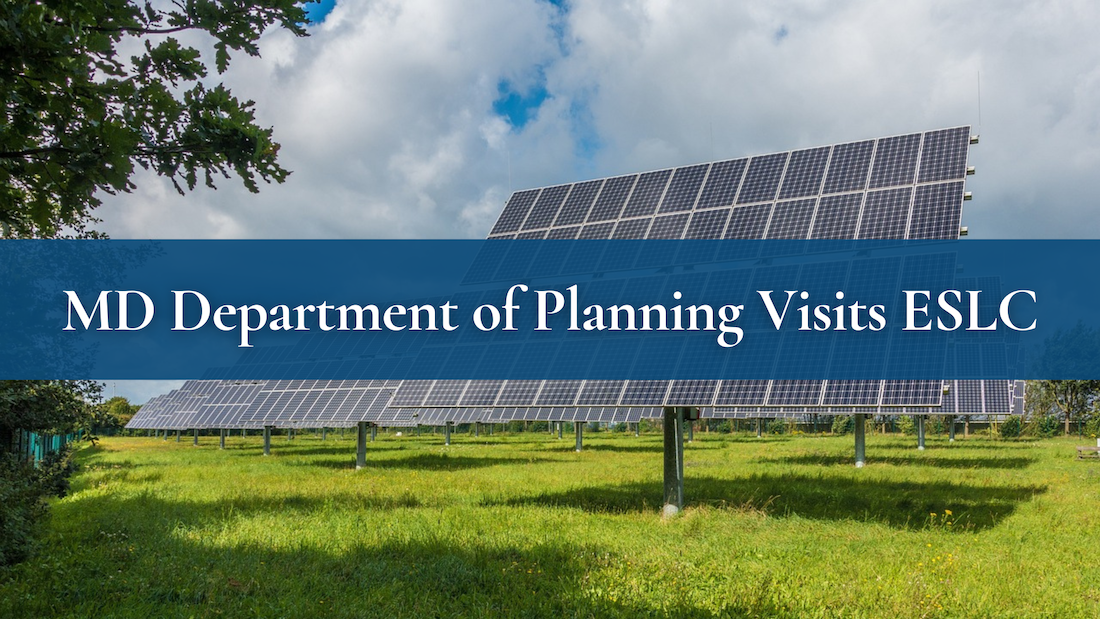MD Department of Planning Visits ESLC

This week, Rebecca Flora, Secretary of the Maryland Department of Planning, and several department staff met with ESLC President Steve Kline and Director of Land Use and Policy Owen Bailey to discuss a host of issues including the growing pressure on the Eastern Shore to develop industrial-scale solar on prime farmland.
Maryland has some of the most ambitious renewable energy goals in the nation, seeking 100% renewable energy by 2035. At the same time, there is no comprehensive plan outlining the best path to reach these goals that accounts for negative impacts, including the loss of some of the most productive farmland in the northeast in one of the country’s most densely populated regions.
ESLC made the argument that if Maryland is to reach its renewable energy goal, we need more data on the best places to install solar, beyond simply following the path of least resistance by siting massive solar developments on productive farm soils.
If solar is put on a parking lot that land can still be a parking lot. If solar is put on a chicken house, data center, distribution center, or any other structure with a large footprint, those structures can still serve their primary use. But when solar is put on farmland, the farmland is lost.
A 2020 Maryland Governor’s report on renewable energy development cited that the conversion of farmland (for any reason) risks the Eastern Shore’s agricultural economy and the state’s ability to grow food. The report states on pages 12 – 13: “There are also concerns that continuing to allow farmland to be converted into other land uses would, at some point, reduce acreage below a critical mass of farmland needed to sustain a viable agricultural economy.” The 2020 report also quotes a 2016 report commissioned by the Harry R. Hughes Center for Agro-Ecology which states that “Since the 1940s, counties that experienced greater reductions in farm acres primarily due to development tended to also experience greater decreases in agricultural economic rank, based on comparative total sales of agricultural products among counties.”
Climate change is an existential threat and should be met with urgency and dedication. We cannot create yet another existential threat—an inability to grow enough food for a growing national and global population—in the process. The United States is losing farmland due to wildfires, droughts, sea level rise, saltwater intrusion, and due to human conflict. We should not be losing farmland to utility-scale solar and should instead be exploring other options.






